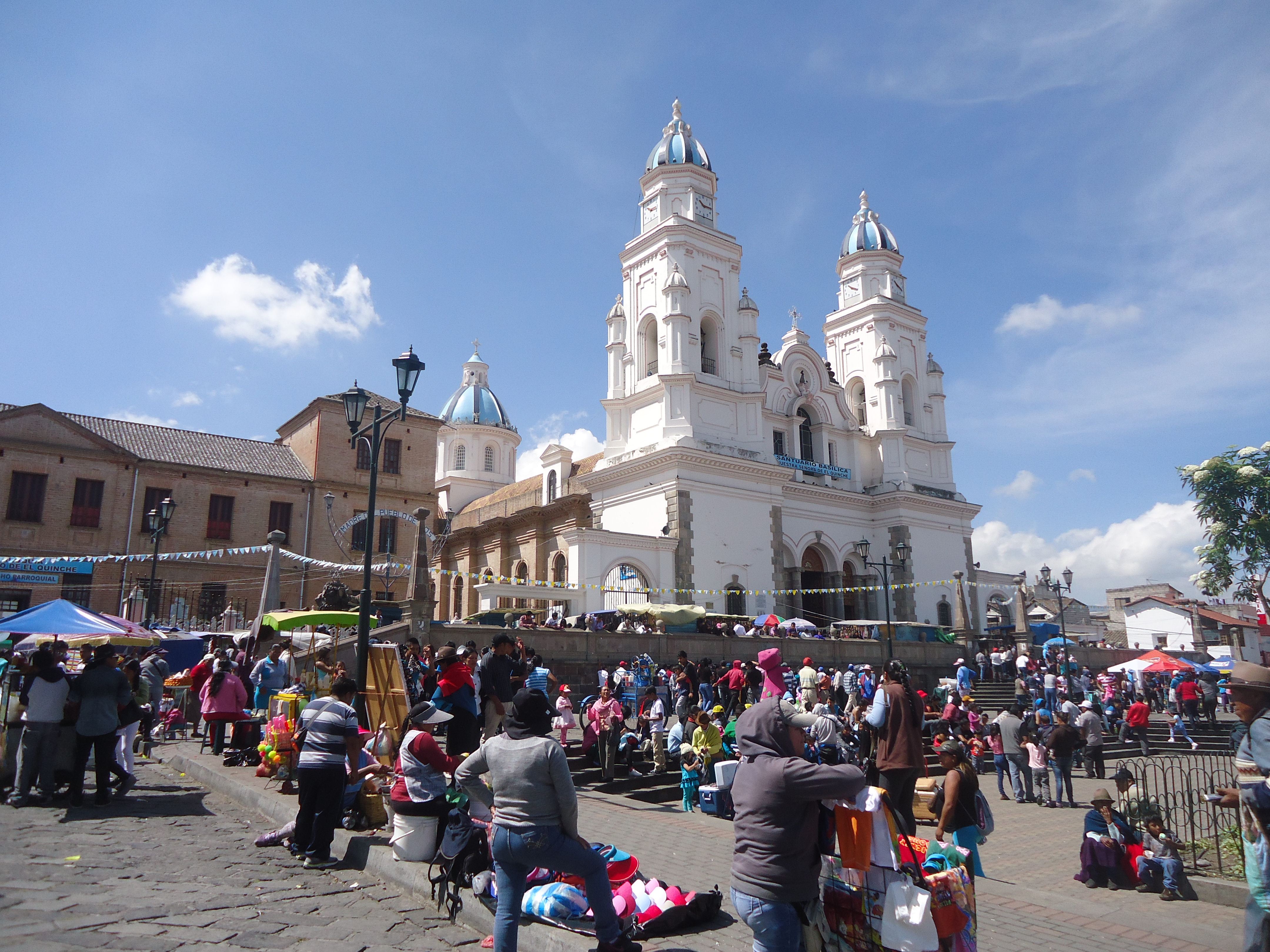El Quinche on:
[Wikipedia]
[Google]
[Amazon]
El Quinche is a city of  The city is known for the National Shrine of Our Lady of the Presentation of El Quinche. A 16th century wooden image of the
The city is known for the National Shrine of Our Lady of the Presentation of El Quinche. A 16th century wooden image of the
Santuario de El Quinche, El Quinche, Ecuador, 2015-07-21, DD 02.JPG
Santuario de El Quinche, El Quinche, Ecuador, 2015-07-21, DD 05.JPG
Santuario de El Quinche, El Quinche, Ecuador, 2015-07-21, DD 06.JPG
Santuario de El Quinche, El Quinche, Ecuador, 2015-07-21, DD 08.JPG
Santuario de El Quinche, El Quinche, Ecuador, 2015-07-21, DD 09.JPG
{{Authority control
Parishes of Quito Canton
Populated places in Pichincha Province
Inca Empire
Pope Francis
Ecuador
Ecuador ( ; ; Quechua: ''Ikwayur''; Shuar: ''Ecuador'' or ''Ekuatur''), officially the Republic of Ecuador ( es, República del Ecuador, which literally translates as "Republic of the Equator"; Quechua: ''Ikwadur Ripuwlika''; Shuar: ' ...
, in the Pichincha Province
Pichincha () is a province of Ecuador located in the northern Sierra region; its capital and largest city is Quito. It is bordered by Imbabura and Esmeraldas to the north, Cotopaxi and Santo Domingo de los Tsáchilas to the south, Napo and ...
, about in a straight line distance northeast of the city of Quito. The city, administratively a rural parish of the canton of Quito, is located in the valley of the headwaters of the Guayllabamba River, to the west of Pambamarca. It borders Cayambe Canton to the northeast.
Virgin Mary
Mary; arc, ܡܪܝܡ, translit=Mariam; ar, مريم, translit=Maryam; grc, Μαρία, translit=María; la, Maria; cop, Ⲙⲁⲣⲓⲁ, translit=Maria was a first-century Jewish woman of Nazareth, the wife of Joseph and the mother of ...
attracts more than 800,000 people on a pilgrimage to the shrine in November.
Pope Francis
Pope Francis ( la, Franciscus; it, Francesco; es, link=, Francisco; born Jorge Mario Bergoglio, 17 December 1936) is the head of the Catholic Church. He has been the bishop of Rome and sovereign of the Vatican City State since 13 March 2013. ...
visited El Quinche on July 8, 2015, and spoke to Roman Catholic
Roman or Romans most often refers to:
*Rome, the capital city of Italy
* Ancient Rome, Roman civilization from 8th century BC to 5th century AD
* Roman people, the people of ancient Rome
*'' Epistle to the Romans'', shortened to ''Romans'', a let ...
clergy.
Pre-Columbian history
El Quinche is situated on a plain at the foot of the eastern cordillera of theAndes
The Andes, Andes Mountains or Andean Mountains (; ) are the longest continental mountain range in the world, forming a continuous highland along the western edge of South America. The range is long, wide (widest between 18°S – 20°S ...
. It was apparently a religious shrine of the indigenous people
Indigenous peoples are culturally distinct ethnic groups whose members are directly descended from the earliest known inhabitants of a particular geographic region and, to some extent, maintain the language and culture of those original people ...
living in the region long before the arrival of Europeans. The Incas
The Inca Empire (also known as the Incan Empire and the Inka Empire), called ''Tawantinsuyu'' by its subjects, ( Quechua for the "Realm of the Four Parts", "four parts together" ) was the largest empire in pre-Columbian America. The adm ...
conquered the area and incorporated it into their empire in the late 15th century. Following a common Inca policy, much of the local population was forcibly relocated to a distant province and replaced by colonies of non-locals, a process called mitma Mitma was a policy of forced resettlement employed by the Incas. It involved the forceful migration of groups of extended families or ethnic groups from their home territory to lands recently conquered by the Incas. The objective was to transfer bo ...
. El Quinche is one of the few places in Ecuador where a large amount of Inca pottery has been found, indicating its prominence as an Inca center.
The Incas built a temple over the indigenous ''huaca
In the Quechuan languages of South America, a huaca or wak'a is an object that represents something revered, typically a monument of some kind. The term ''huaca'' can refer to natural locations, such as immense rocks. Some huacas have been ass ...
'' (shrine), and in turn the Spanish
Spanish might refer to:
* Items from or related to Spain:
**Spaniards are a nation and ethnic group indigenous to Spain
**Spanish language, spoken in Spain and many Latin American countries
**Spanish cuisine
Other places
* Spanish, Ontario, Can ...
after conquering the area in the 1530s built a church over the Inca temple which became the shrine of El Quinche.
El Quinche was the southernmost settlement of what was called the Pais Caranqui, a group of northern Ecuadorian chiefdoms, which opposed the expansion of the Incas into their homelands. After conquering El Quinche, the Incas constructed a number of hilltop forts (pukara
Pukara (Aymara and Quechuan "fortress", Hispanicized spellings ''pucara, pucará'') is a defensive hilltop site or fortification built by the prehispanic and historic inhabitants of the central Andean area (from Ecuador to central Chile and no ...
s) called the Pambamarca Fortress Complex
The Pambamarca Fortress Complex consists of the ruins of a large number of pukaras (hilltop forts) and other constructions of the Inca Empire. The fortresses were constructed in the late 15th century by the Incas to overcome the opposition of the ...
north west of El Quinche to prosecute the war against the Cayambe people and other chiefdoms and also to protect El Quinche. An Inca road stretched from Quito to El Quinche and onward to Pambamarca and toward the lowland tropics of Ecuador.Anderson, pp. 327-329
References
Gallery of images of the sanctuary of the Lady of Quinche